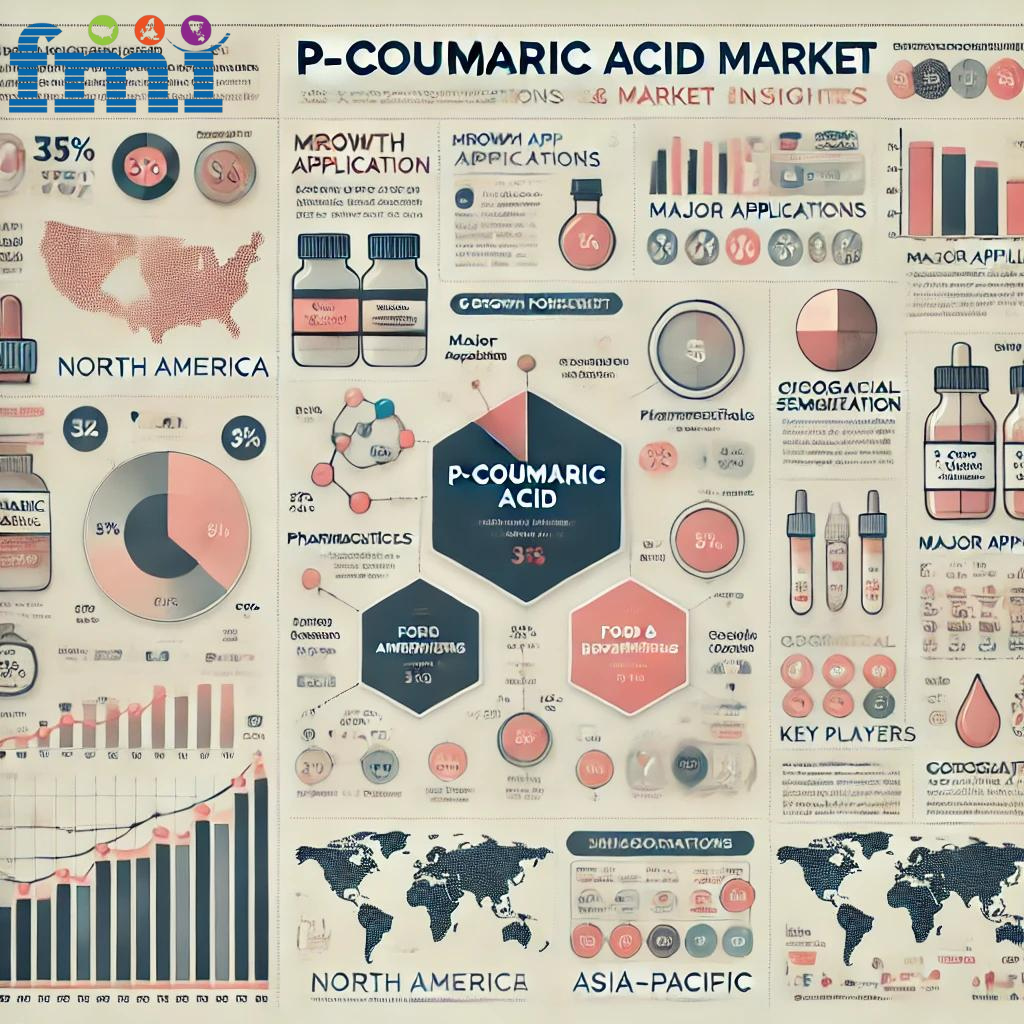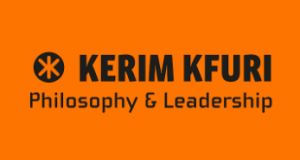The United States leads the p-coumaric acid market, contributing over 30% of revenue. Driven by rising demand in the pharmaceutical sector and the preference for organic food, U.S. sales are expected to grow at a 6.6% CAGR, reaching USD 8 million by 2034. Continuous investment in research & development by manufacturers further strengthens the country's market position.
NEWARK, Del, Sept. 20, 2024 (GLOBE NEWSWIRE) -- The global p-coumaric acid market size is set to grow significantly over the next decade, with its market size estimated to reach USD 8.8 million in 2024, and further expanding to USD 25.9 million by 2034, at a CAGR of 11.3%. Key factors contributing to this growth include rising demand for natural preservatives, increased awareness of health benefits, and the growing popularity of natural and organic ingredients in food, pharmaceuticals, and cosmetics.
p-Coumaric acid is an organic compound that belongs to a class of chemicals called hydroxycinnamic acids. It is a naturally occurring phenolic acid found in a variety of plants, including fruits, vegetables, and grains. As a derivative of cinnamic acid, it plays a key role in plant metabolism and offers several biological benefits.
Key Market Highlights:
- The shift towards natural ingredients, especially in the food and beverage industry, is driving demand for p-coumaric acid as a natural preservative. The segment is projected to reach USD 17.7 million by 2034.
- North America and Europe dominate the market, driven by large vegan populations and the increasing adoption of natural products. These regions account for over 55% of the market share . However, China, India, and Brazil are emerging as key markets, with projected CAGRs of 10.6%, 12%, and 13.5%, respectively.
- p-Coumaric acid’s antioxidant, anti-inflammatory, and skin-lightening properties are gaining traction in the skincare and cosmetics industries, fueling its demand.
Market Trends:
- Growing consumer preference for natural and organic products is influencing market dynamics.
- Increasing usage of p-coumaric acid in biodegradable polymers and novel drug delivery systems is opening new avenues for growth.
- The food & beverages sector is set to remain the dominant application area, while the antioxidant functionality segment is projected to reach USD 12.3 million by 2034.

The p-Coumaric Acid Market is driven by several key factors that contribute to its growing demand across various industries, particularly in food, pharmaceuticals, cosmetics, and nutraceuticals. Below are the prominent drivers:
1. Increased Demand for Natural Antioxidants
p-Coumaric acid, a natural phenolic compound, is recognized for its potent antioxidant properties. As consumer preferences shift toward natural and clean-label ingredients, industries are incorporating p-coumaric acid into food and beverages, cosmetics, and nutraceuticals to prevent oxidation and enhance shelf life.
2. Growth in Functional Foods and Nutraceuticals
The rise of functional foods and dietary supplements that offer health benefits beyond basic nutrition is a significant market driver. p-Coumaric acid is associated with anti-inflammatory, antimicrobial, and anticancer properties, making it a desirable ingredient in products aimed at improving health and wellness.
3. Increasing Awareness of Anti-inflammatory Benefits
Studies have shown that p-Coumaric acid possesses anti-inflammatory effects, making it valuable for developing therapeutic products targeting inflammation-related conditions. This has led to increased interest from the pharmaceutical and medical food sectors.
4. Expanding Natural Cosmetics and Personal Care Market
In the cosmetics industry, p-Coumaric acid is used for its anti-aging, skin-soothing, and antioxidant properties. As the demand for natural and organic skincare products grows, p-coumaric acid has become an attractive ingredient for formulating clean beauty products.
5. Rising Use in Food Preservation
p-Coumaric acid’s ability to inhibit the growth of certain bacteria and fungi has led to its adoption as a natural preservative in the food industry. The push for alternatives to synthetic preservatives is further driving its demand.
Country-Wise Insights:
The table below highlights key nations’ p-coumaric acid market revenues. The United States and China are set to witness high p-coumaric acid consumption, with expected valuations of USD 8.0 million and USD 4.2 million, respectively, in 2034.
| Countries | Projected p-Coumaric Acid Market Value (2034) |
| United States | USD 8 million |
| Brazil | USD 1.4 million |
| Germany | USD 2.9 million |
| China | USD 4.2 million |
| India | USD 2.9 million |
The table below shows the anticipated growth rates of the top countries. The market is set to flourish in China, Brazil, and India where the CAGRs are supposed to be 10.6%, 12%, and 13.5%, respectively for the forecast period.
| Countries | Expected p-Coumaric Acid Market CAGR (2024 to 2034) | |
| United States | 6.6% | |
| Brazil | 13.5% | |
| Germany | 8.2% | |
| China | 10.6% | |
| India | 12.0% | |
“The growing preference for natural preservatives over synthetic alternatives is driving p-coumaric acid demand, especially in the food & beverage industry. Its antimicrobial properties, extended shelf life, and cost-effectiveness via precision fermentation are key factors. As processed and packaged food consumption increases, p-coumaric acid is well-positioned to capture a larger market share, with the segment expected to reach USD 17.7 million by 2034.”- says Nandini Roy Choudhury, Client Partner at Future Market Insights
Key Challenges Facing the p-Coumaric Acid Market
- High Production CostsExpensive extraction and purification processes limit cost-effective, large-scale production.
- Raw Material AvailabilitySeasonal variations and climate impact the supply of plant-based sources for p-Coumaric acid.
- Low Consumer AwarenessLimited knowledge of its benefits compared to more popular natural antioxidants reduces demand.
- Regulatory HurdlesComplex and region-specific regulatory processes delay market entry.
- Intense CompetitionWell-established natural antioxidants overshadow p-Coumaric acid in the market.
- Standardization IssuesQuality variations across sources and batches create inconsistency in product effectiveness.
Competitive Landscape
Research & development is playing a pivotal role in the success of p-coumaric acid manufacturers . As a result, large investments are being made in research & development to explore new applications of this acid. Several companies are also looking to integrate advanced extraction and processing technologies to provide high-quality products at affordable rates. Several efforts are being made to educate people about the benefits of p-coumaric acid.
Recent Developments in P-coumaric Acid Market
- In 2022, Hangzhou Viablife Biotech launched its p-coumaric acid (4-hydrocinnamic acid) made with fermentation and formulated as a natural preservative.
- In 2021, Biotech giant Conagen announced a new line of preservative products, including p-coumaric acid.
Key Companies Profiled
Conagen Biotech; Hangzhou Viablife Biotech; Shandong Holly; Cixiang Medicine; Zhuhai Jiayi; Shandong YangCheng; Lianyungang Guosheng Global p-Coumaric Acid
Browse full Report: https://www.futuremarketinsights.com/reports/p-coumaric-acid-market
Market Segmentation
By Functionality:
- Anti-oxidant
- Anti-microbial
By Application:
- Pharmaceuticals
- Food & Beverages
- Cosmetics
- Personal Care
- Chemicals
By Region:
- South Asia
- East Asia
- Oceania
- North America
- Latin America
- Europe
- Middle East & Africa
German Translation
Die globale Marktgröße für p-Cumarsäure wird in den nächsten zehn Jahren erheblich wachsen, wobei ihre Marktgröße im Jahr 2024 schätzungsweise 8,8 Mio. USD erreichen und bis 2034 weiter auf 25,9 Mio. USD wachsen wird, bei einer CAGR von 11,3 %. Zu den Schlüsselfaktoren, die zu diesem Wachstum beitragen, gehören die steigende Nachfrage nach natürlichen Konservierungsstoffen, das gestiegene Bewusstsein für gesundheitliche Vorteile und die wachsende Beliebtheit natürlicher und biologischer Inhaltsstoffe in Lebensmitteln, Pharmazeutika und Kosmetika.
p-Cumarsäure ist eine organische Verbindung, die zu einer Klasse von Chemikalien gehört, die als Hydroxyzimtsäuren bezeichnet werden. Es ist eine natürlich vorkommende Phenolsäure, die in einer Vielzahl von Pflanzen vorkommt, darunter Obst, Gemüse und Getreide. Als Derivat der Zimtsäure spielt es eine Schlüsselrolle im pflanzlichen Stoffwechsel und bietet mehrere biologische Vorteile.
Wichtige Markt-Highlights:
- Die Verlagerung hin zu natürlichen Inhaltsstoffen, insbesondere in der Lebensmittel- und Getränkeindustrie, treibt die Nachfrage nach p-Cumarsäure als natürliches Konservierungsmittel an. Das Segment wird bis 2034 voraussichtlich 17,7 Mio. USD erreichen.
- Nordamerika und Europa dominieren den Markt, angetrieben von einer großen veganen Bevölkerung und der zunehmenden Einführung von Naturprodukten. Diese Regionen machen über 55 % des Marktanteils aus. China, Indien und Brasilien entwickeln sich jedoch zu Schlüsselmärkten mit prognostizierten CAGRs von 10,6 %, 12 % bzw. 13,5 %.
- Die antioxidativen, entzündungshemmenden und hautaufhellenden Eigenschaften von p-Cumarsäure gewinnen in der Hautpflege- und Kosmetikindustrie an Bedeutung und treiben die Nachfrage an.
Markttrends:
- Die wachsende Präferenz der Verbraucher für natürliche und biologische Produkte beeinflusst die Marktdynamik.
- Die zunehmende Verwendung von p-Cumarsäure in biologisch abbaubaren Polymeren und neuartigen Arzneimittelverabreichungssystemen eröffnet neue Wachstumsmöglichkeiten.
- Der Lebensmittel- und Getränkesektor wird voraussichtlich der dominierende Anwendungsbereich bleiben, während das Segment der antioxidativen Funktionalität bis 2034 voraussichtlich 12,3 Mio. USD erreichen wird.
Der Markt für p-Cumarsäure wird von mehreren Schlüsselfaktoren angetrieben, die zu seiner wachsenden Nachfrage in verschiedenen Branchen beitragen, insbesondere in den Bereichen Lebensmittel, Pharmazeutika, Kosmetika und Nutrazeutika. Nachfolgend sind die wichtigsten Treiber aufgeführt:
1. Erhöhte Nachfrage nach natürlichen Antioxidantien
p-Cumarsäure, eine natürliche phenolische Verbindung, ist für ihre starken antioxidativen Eigenschaften bekannt. Da sich die Verbraucherpräferenzen hin zu natürlichen und Clean-Label-Inhaltsstoffen verlagern, integrieren die Industrien p-Cumarsäure in Lebensmittel und Getränke, Kosmetika und Nahrungsergänzungsmittel, um Oxidation zu verhindern und die Haltbarkeit zu verlängern.
2. Wachstum bei funktionellen Lebensmitteln und Nutrazeutika
Der Aufstieg von funktionellen Lebensmitteln und Nahrungsergänzungsmitteln, die gesundheitliche Vorteile bieten, die über die Grundernährung hinausgehen, ist ein bedeutender Markttreiber. p-Cumarsäure wird mit entzündungshemmenden, antimikrobiellen und krebshemmenden Eigenschaften in Verbindung gebracht, was sie zu einem begehrten Inhaltsstoff in Produkten macht, die auf die Verbesserung von Gesundheit und Wohlbefinden abzielen.
3. Sensibilisierung für die entzündungshemmenden Vorteile
Studien haben gezeigt, dass p-Cumarsäure entzündungshemmende Wirkungen besitzt, was sie wertvoll für die Entwicklung von therapeutischen Produkten zur Behandlung von entzündungsbedingten Erkrankungen macht. Dies hat zu einem gestiegenen Interesse aus dem Pharma- und medizinischen Lebensmittelsektor geführt.
4. Expandierender Markt für Naturkosmetik und Körperpflege
In der Kosmetikindustrie wird p-Cumarsäure wegen ihrer Anti-Aging-, hautberuhigenden und antioxidativen Eigenschaften verwendet. Da die Nachfrage nach natürlichen und biologischen Hautpflegeprodukten wächst, hat sich p-Cumarsäure zu einem attraktiven Inhaltsstoff für die Formulierung sauberer Schönheitsprodukte entwickelt.
5. Zunehmende Verwendung in der Lebensmittelkonservierung
Die Fähigkeit der p-Cumarsäure, das Wachstum bestimmter Bakterien und Pilze zu hemmen, hat dazu geführt, dass sie als natürliches Konservierungsmittel in der Lebensmittelindustrie eingesetzt wird. Der Drang nach Alternativen zu synthetischen Konservierungsstoffen treibt die Nachfrage weiter an.
Länderspezifische Einblicke:
Die folgende Tabelle zeigt die Umsätze der wichtigsten Länder auf dem p-Cumarsäure-Markt. In den Vereinigten Staaten und in China wird ein hoher p-Cumarsäure-Verbrauch erwartet, mit erwarteten Bewertungen von 8,0 Mio. USD bzw. 4,2 Mio. USD im Jahr 2034.
| Länder | Prognostizierter Marktwert von p-Cumarsäure (2034) |
| USA | 8 Mio. USD |
| Brazilien | 1,4 Mio. USD |
| Deutschland | 2,9 Mio. USD |
| China | 4,2 Mio. USD |
| Indien | 2,9 Mio. USD |
Die folgende Tabelle zeigt die erwarteten Wachstumsraten der Top-Länder. Der Markt wird in China, Brasilien und Indien florieren, wo die CAGRs für den Prognosezeitraum 10,6 %, 12 % bzw. 13,5 % betragen sollen.
| Länder | Erwartete CAGR des p-Cumarsäure-Marktes (2024 bis 2034) | |
| USA | 6.6 | % |
| Brazilien | 13.5 | % |
| Deutschland | 8.2 | % |
| China | 10.6 | % |
| Indien | 12.0 | % |
"Die wachsende Präferenz für natürliche Konservierungsstoffe gegenüber synthetischen Alternativen treibt die Nachfrage nach p-Cumarsäure an, insbesondere in der Lebensmittel- und Getränkeindustrie. Seine antimikrobiellen Eigenschaften, die verlängerte Haltbarkeit und die Wirtschaftlichkeit durch Präzisionsfermentation sind Schlüsselfaktoren. Da der Verbrauch von verarbeiteten und verpackten Lebensmitteln zunimmt, ist p-Cumarsäure gut positioniert, um einen größeren Marktanteil zu erobern, wobei das Segment bis 2034 voraussichtlich 17,7 Mio. USD erreichen wird. "- sagt Nandini Roy Choudhury, Client Partner bei Future Market Insights
Die wichtigsten Herausforderungen für den p-Cumarsäure-Markt
1. Hohe ProduktionskostenTeure Extraktions- und Reinigungsprozesse schränken die kosteneffiziente Produktion in großem Maßstab ein.
2. Verfügbarkeit von RohstoffenSaisonale Schwankungen und das Klima wirken sich auf das Angebot an pflanzlichen Quellen für p-Cumarsäure aus.
3. Geringes VerbraucherbewusstseinBegrenztes Wissen über seine Vorteile im Vergleich zu populäreren natürlichen Antioxidantien reduziert die Nachfrage.
4. Regulatorische HürdenKomplexe und regionsspezifische regulatorische Prozesse verzögern den Markteintritt.
5. Intensiver WettbewerbGut etablierte natürliche Antioxidantien überschatten p-Cumarsäure auf dem Markt.
6. Fragen der StandardisierungQualitätsunterschiede zwischen Quellen und Chargen führen zu Inkonsistenzen in der Produkteffektivität.
Wettbewerbslandschaft
Forschung und Entwicklung spielen eine entscheidende Rolle für den Erfolg der Hersteller von p-Cumarsäure. Infolgedessen werden große Investitionen in Forschung und Entwicklung getätigt, um neue Anwendungen dieser Säure zu erforschen. Mehrere Unternehmen sind auch bestrebt, fortschrittliche Extraktions- und Verarbeitungstechnologien zu integrieren, um qualitativ hochwertige Produkte zu erschwinglichen Preisen anzubieten. Es werden mehrere Anstrengungen unternommen, um die Menschen über die Vorteile von p-Cumarsäure aufzuklären.
Jüngste Entwicklungen auf dem Markt für p-Cumarsäure
- Im Jahr 2022 brachte Hangzhou Viablife Biotech seine p-Cumarsäure (4-Hydrozimtsäure) auf den Markt, die durch Fermentation hergestellt und als natürliches Konservierungsmittel formuliert wurde.
- Im Jahr 2021 kündigte der Biotech-Riese Conagen eine neue Reihe von Konservierungsmitteln an, darunter p-Cumarsäure.
Schlüsselunternehmen im Profil
Conagen Biotech; Hangzhou Viablife Biotech; Shandong Stechpalme; Cixiang Medizin; Zhuhai Jiayi; Shandong YangCheng; Lianyungang Guosheng Global p-Cumarsäure
Marktaufteilung
Nach Funktionalität:
- Antioxidans
- Antimikrobiell
Nach Anwendung:
- Pharmaka
- Lebensmittel & Getränke
- Kosmetik
- Körperpflege
- Chemikalien
Nach Region:
- Südasien
- Ostasien
- Ozeanien
- Nordamerika
- Lateinamerika
- Europa
- Naher Osten & Afrika
Authored by:
Nandini Roy Choudhury (Client Partner for Food & Beverages at Future Market Insights, Inc.) has 7+ years of management consulting experience. She advises industry leaders and explores off-the-eye opportunities and challenges. She puts processes and operating models in place to support their business objectives.
She has exceptional analytical skills and often brings thought leadership to the table.
Nandini has vast functional expertise in key niches, including but not limited to food ingredients, nutrition & health solutions, animal nutrition, and marine nutrients. She is also well-versed in the pharmaceuticals, biotechnology, retail, and chemical sectors, where she advises market participants to develop methodologies and strategies that deliver results.
Her core expertise lies in corporate growth strategy, sales and marketing effectiveness, acquisitions and post-merger integration and cost reduction. Nandini has an MBA in Finance from MIT School of Business. She also holds a Bachelor’s Degree in Electrical Engineering from Nagpur University, India.
Nandini has authored several publications, and quoted in journals including Beverage Industry, Bloomberg, and Wine Industry Advisor.
Explore FMI’s related ongoing Coverage in Food and Beverage Domain:
Global Plant Based Preservatives Market sales are projected to rise at a 6.7% compound annual growth rate (CAGR) and reach a market valuation of USD 1,608.2 million by 2034 end.
The estimated size of antioxidants in 2022 was close to USD 2.11 billion. The market would be driven by a number of variables throughout the course of the projected period
The global natural food and beverage preservatives market size is expected to reach USD 880.4 million in 2032. As per FMI Analysts, the global natural food and beverage preservatives market is estimated to be valued at USD 435.2 million in 2022 and is projected to increase at a CAGR of 7.3% in the forecast period from 2022 to 2032.
The global organic acid market is expected to total USD 11.3 Billion in 2022. Demand for organic acid is forecast to increase at a steady CAGR of 5.3% over the forecast period.
The global acidified whey protein market is estimated to surge significantly in the coming years. The market is anticipated to reach a valuation of USD 200.0 million by 2023.
The global hydrolyzed whey protein market is expected to be valued at USD 4,749.7 million in 2023 and is expected to reach USD 8,175.5 million by 2033.
At a CAGR of 6.9% between 2022 and 2032, the global salicylic acid market is forecast to grow from an anticipated 2022 valuation of $417.8 Million to a 2032 valuation of $814.2 Million.
The stearic acid market is anticipated to record a CAGR of 7.6% during the forecast period, up from USD 33 Billion in 2021 to reach a valuation of USD 50 Billion by 2026.
The global ferulic acid market size reached a valuation of USD 67.8 Million in 2022. The overall sales of ferulic acid are projected to grow at a robust CAGR of 6.74% between 2022 and 2032
About Future Market Insights (FMI)
Future Market Insights, Inc. (ESOMAR certified, recipient of the Stevie Award, and a member of the Greater New York Chamber of Commerce) offers profound insights into the driving factors that are boosting demand in the market. FMI stands as the leading global provider of market intelligence, advisory services, consulting, and events for the Packaging, Food and Beverage, Consumer Technology, Healthcare, Industrial, and Chemicals markets. With a vast team of over 400 analysts worldwide, FMI provides global, regional, and local expertise on diverse domains and industry trends across more than 110 countries.
Join us as we commemorate 10 years of delivering trusted market insights. Reflecting on a decade of achievements, we continue to lead with integrity, innovation, and expertise.
Contact FMI: Future Market Insights Inc. Christiana Corporate, 200 Continental Drive, Suite 401, Newark, Delaware – 19713, USA T: +1-845-579-5705 For Sales Enquiries: [email protected] Website: https://www.futuremarketinsights.com LinkedIn| Twitter| Blogs | YouTube

Legal Disclaimer:
EIN Presswire provides this news content "as is" without warranty of any kind. We do not accept any responsibility or liability for the accuracy, content, images, videos, licenses, completeness, legality, or reliability of the information contained in this article. If you have any complaints or copyright issues related to this article, kindly contact the author above.
You just read:
News Provided By
September 20, 2024, 12:30 GMT
EIN Presswire's priority is author transparency. We do our best to weed out false and misleading content. The content above is the sole responsibility of the author who makes it available. If you have any complaints, kindly contact the author above.
Originally published at https://www.einpresswire.com/article/745116002/global-p-coumaric-acid-market-to-reach-usd-25-9-million-by-2034-exhibiting-11-3-cagr-growth-future-market-insights-inc







